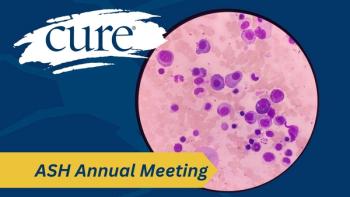
FDA Encourages Men to be Included in Breast Cancer Clinical Trials
The Food and Drug Administration issued guidelines to hopefully broaden clinical trial criteria for breast cancer studies to include men.
The Food and Drug Administration (FDA) issued industry guidelines to encourage the inclusion of men in breast cancer clinical trials — a population of patients typically excluded because of the rarity of its occurrence in men.
“Breast cancer is rare in males, with less than 1% of all breast cancer cases occurring in males. (So,) males have historically been excluded from clinical trials of breast cancer drugs because the disease in males is rare,” FDA spokesman Charles Kohler said in an interview with CURE. “This exclusion has resulted in limited FDA-approved treatment options for males with breast cancer. Treatment of male breast cancer is based on experience with breast cancer in females and data from studies conducted in females.”
In the draft recommendations, the agency issued the following guidelines:
- Clinical trials exploring treatments for breast cancer should allow for enrollment of both men and women.
- When investigators wish to exclude male participants, a scientific rationale should be provided.
- For clinical trials for a breast cancer drug that exclude males or have limited male enrollment, the potential should be explored to “extrapolate findings to include male patients in the FDA-approved indication for the drug where no difference in efficacy or safety is anticipated between males and females based on the mechanism of action of a drug.”
However, of note, when additional data are needed to support an indication for male patients, the FDA encourages exploring various practical options to obtain these data, such as small, single-cohort studies and studies that use real-world data sources.
“The FDA has recently focused on modernizing eligibility criteria for oncology clinical trials, in order to expand the patient population to better reflect the population outside of the study and reduce barriers to clinical trial enrollment,” Kohler said.
Bret Miller, who founded the
“Our bodies are still different, so they are going to react to different drugs than women do. So, being able to be a part of that, even though (male patients with breast cancer) are such a small number, it’s just huge,” said Bret. “It's a very big step for men to be included in these trials.”
While broadening these guidelines may offer more treatment options for men with breast cancer moving forward, they can also raise awareness surrounding the disease.
“These guidelines are going to help build awareness for men, not only trials, but hopefully make men more aware that it's possible that they can still get diagnosed with breast cancer,” Bret said.
In particular, signs and symptoms of the disease include a painless lump or thickening in breast tissue; changes to the skin covering the breast, such as dimpling, puckering, redness or scaling; changes to the nipple, such as redness or scaling, or a nipple that begins to turn inward; and nipple discharge. Similarly, risk factors associated with the disease comprise of older age, exposure to estrogen, a family history of breast cancer, Klinefelter's syndrome (a genetic syndrome that occurs when boys are born with more than one copy of the X chromosome), liver disease, obesity and testicle disease or surgery.
Bret’s mother, Peggy, agreed in how pertinent these guidelines will be for men with breast cancer. “The FDA has actually approved some drugs for females only, which is wrong if it's (effective) for all breast cancer patients. And that's where the change has to continue to keep happening,” she said. “Recognizing that today, it's a huge win for us — all of the people and families out there that have been touched by male breast cancer. This is a huge milestone for us.”
With this milestone, Bret offers a key piece of advice for men facing a breast cancer diagnosis: “I mean, it's gaining knowledge. Once you're diagnosed — yes, it's a shell shock three, to be diagnosed with breast cancer being a male – get involved to ask as many questions as possible with your oncologist,” he said. “Knowledge is power.”
“And don't take no for an answer, you're allowed second, third and fourth opinions,” Peggy added.





